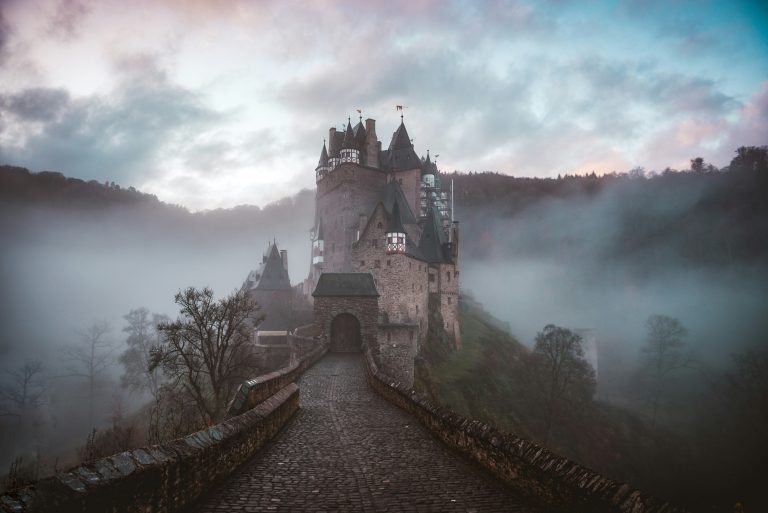Choosing Settings with the Highest EQ
Whether setting is a huge element in your story because of your premise or not, you can make setting powerful and impacting by choosing each place carefully.
For each scene, consider your high moment and the plot point you are going to reveal. The setting should be determined by the high point of the scene. Stop and think what main plot point or character insight you are going to center on in a scene.
What’s a high moment? Think about the purpose of your scene. Why are you writing it? What key plot development are you planning to show? Your scenes need to be crafted so that the action builds in the scene to this key moment, which comes at the end.
Consider the dynamics and conflict of the characters in that scene and ask: Where can I put these characters to generate the most conflict (inner and outer) and the strongest emotional quotient?
How do you want her to change in this scene? Think of the perfect setting to create or influence that change.
You want every scene to have the highest EQ (Emotional Quotient) possible. Why? Because conflict is story, and emotions are needed for conflict. And strong emotions are needed for strong conflict and high stakes.
If your characters feel nothing at all for the place they are in—guess what? The readers won’t care either. You may not think that matters, but it does. Do you care where you live? Where you work? Where you spend your free time? Does place matter at all to you at anytime? Never? Are you human? Hmmm . . . I wonder.
To have a high moment of reveal or conflict, consider some choices of locale that will be compelling, interesting, provide variety, and most importantly be significant or emotive for your characters. Think about the key moments in your novel when your character has the greatest insights, pain, confrontation, or despair. If you can set those scenes in places that have emotional impact on your character, the scene will be stronger.
For example, you may have a scene planned that shows your main character having a fight with her boyfriend over her unwanted pregnancy. You could have the argument in a restaurant. Fine. But what if you have the argument in front of a preschool daycare or a hospital nursery ward, where she is visiting a friend who just had a baby?
What if this character is conflicted about aborting, and all around her are cute laughing toddlers? Or screeching babies needing to be fed and changed and cared for? Depending on your plot and character arcs, these settings could add to the tension and hit home the high moment of your scene in a more powerful way.
Just as setting has shaped who you are, let setting shape your characters and influence them in the scenes they are in. Create setting with a purpose.
When coming up with the right setting is hard, we often pull ideas from movies or books that are similar to ours. However, recycling common settings too often can steal the uniqueness from our stories.
Readers love a fresh experience, so before going with a tried-and-true setting, think outside the box. Consider an interesting and unique setting in the locale in which your characters live, play, and work.
When there’s a lot going on inside the character, it can also be tempting to purposefully stick with common locations to keep the focus more firmly on the inner turmoil. However, centering too much on what’s happening inside the character often leads to pacing problems. And the tendency may be to neglect the setting altogether such that your readers have no ideas where your character is while she’s mulling over her recent breakup.
The right setting supplies opportunities for symbolism, active backstory delivery, and emotional showing through interaction, so stretch yourself to find settings that provide the best inner landscape connection while keeping the pace and plot rolling forward.
Settings should include an emotional value. This is where the setting has a specific emotional tie to the protagonist and possibly other characters. It holds meaning in some way, or acts as a symbol, charging the scene.
For example, it may be that the setting is symbolic of some past life event and serves as a reminder of what happened and the feelings associated with it. Imagine a character being asked to an important business lunch in the same restaurant where his girlfriend turned down his marriage proposal. Even though time has passed, maybe years, an echo of that hurt and rejection will affect him while he’s there and, in turn, will influence his behavior.
If the setting is someplace neutral to the protagonist and there is no emotional value based on past knowledge or experience, we can still bring one to the forefront by creating mood. This is done by choosing sensory descriptions that reinforce a specific emotion (fear, peacefulness, unease, pride, etc.) that we want the character (and the reader) to feel.
Mood can also be created through the use of light and shadow, universal symbolism, weather, and other techniques. Regardless of whether emotional values are intrinsic or are added via mood, choosing a setting that evokes an emotional response is important, since a character’s feelings about his environment add realism to the scene while drawing readers in.
What kind of setting can you come up with that impacts your protagonist in a bit way? Share in the comments.












I really appreciated this post! One of my early never-to-be-published novels had endless scenes at the kitchen table, in a restaurant, or (blush) on the phone. Exactly as Suzanne has pointed out, I thought of “setting” as merely the container for a conversation.
Since then, I’ve learned to be alert for scenes where an emotionally evocative setting is needed. Not every scene needs that, however. If ALL scenes are set in unusual places, that may not be so good either! It may be the very contrast that signals that this particular scene (in a nail salon, an abandoned amusement park, the crowded lobby of a movie theater) is important — the fact that it’s bookended by scenes that take place in relatively neutral settings.
Where setting is bland, there may need to be more richness in other aspects, such as description of characters’ appearance or gestures. Where setting is vivid, other aspects may not need the same level of detail.
A great topic! Thanks, Suzanne.
Thank you, this was a good fit this morning. I often visualize a moment, a dialogue, then write about. Nice to think on what would add more tension, bring more angst. Not to mention of the craft of creating the setting, without forgetting the characters in it 😉
As always, great advice. Learning and growing to be the best author I can be and this website is a big part of it. Thanks!
Thank you!
I second this post. Suzanne is always on point, extremely helpful and responsive.
This post made me think of all the movies I love from best sellers. It was the settings that pulled me in. I think writing as if you’re watching a movie will give more depth to your story. Thank you for this post.